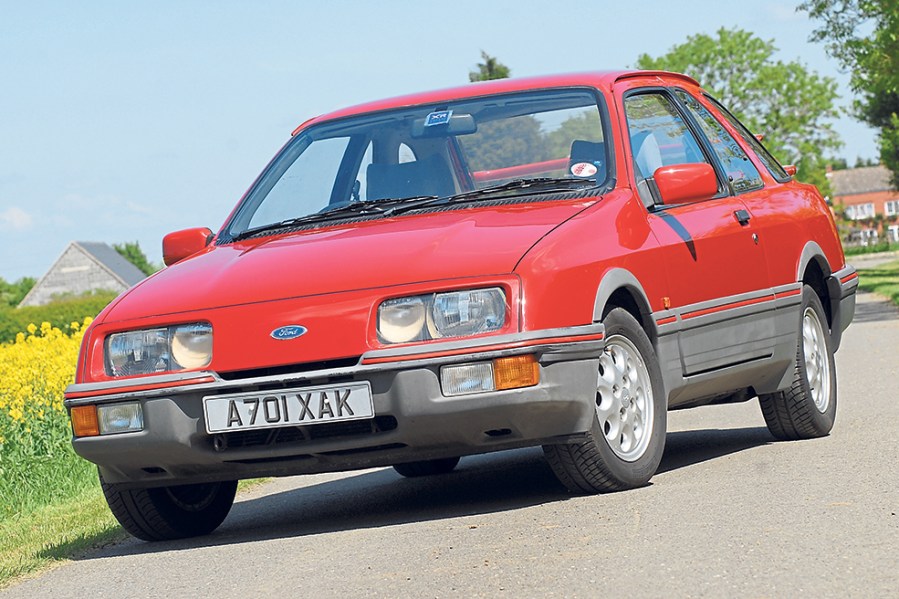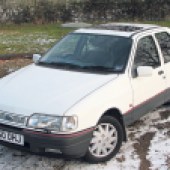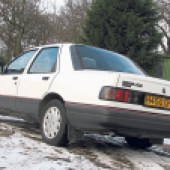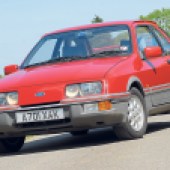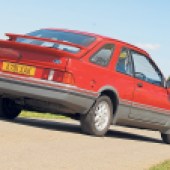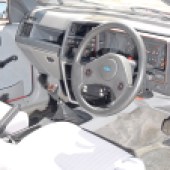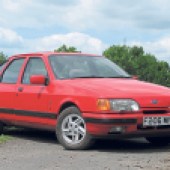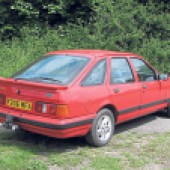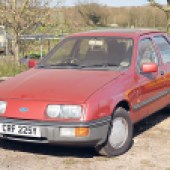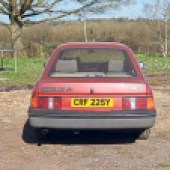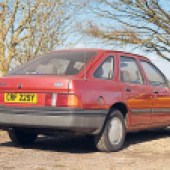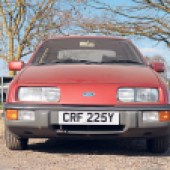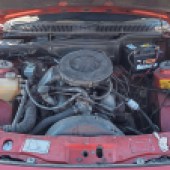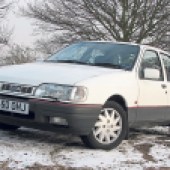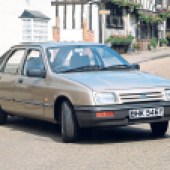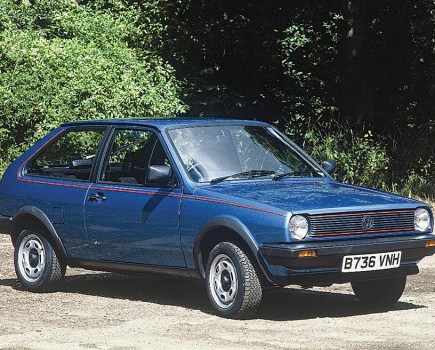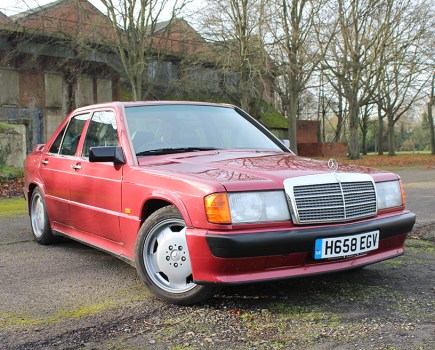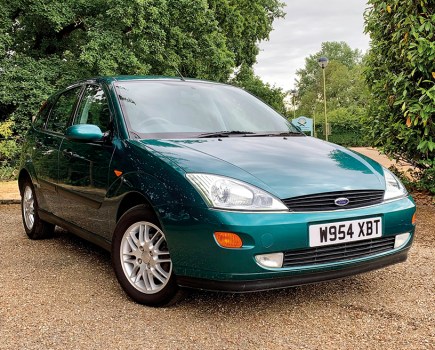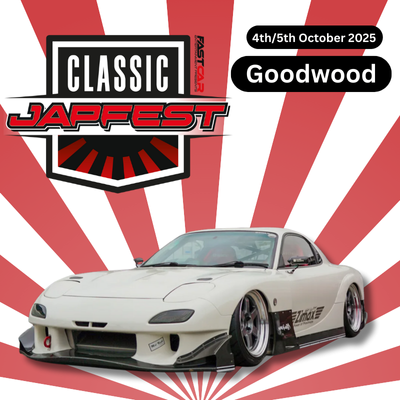Forty years ago, the Ford Sierra was as famed for its ‘jellymould’ design as its family car credentials. Today, it’s a practical classic with few pitfalls and plenty of retro-cool appeal
Words: Dan Williamson
Supercar-baiting RS Cosworths still dominate the headlines, their lottery-winner auction prices casting an iconic glow over the entire Sierra line-up. But the everyday models are a different proposition altogether – not only more affordable, but also far easier to live with, find, and maintain. Four decades after its launch, the Sierra remains a classic with plenty to offer.
When the Ford Sierra arrived, it replaced the traditional Cortina and stunned loyal Blue Oval buyers with its sleek curves and aerodynamic styling. Flush-fitting bumpers and smooth wheel trims were space-age stuff in 1982, even if the oily bits were resolutely conventional. Worst of all for traditionalists, the beloved three-box saloon had been dropped in favour of a five-door hatch and a chunky estate. The “jellymould” nickname came quickly – and stuck.
Debuting in September 1982, the Sierra kept the Cortina’s rear-drive layout but adopted MacPherson struts at the front and independent suspension at the back. Engines were familiar too: the ageing Pinto in 1.3-, 1.6- or 2.0-litre guise, each tied to a four-speed ’box, or the old Cologne 2.3 V6 with a three-speed auto. A Peugeot-sourced 2.3 diesel was offered with a five-speed manual. As ever, Ford’s trim hierarchy – base, L, GL and Ghia – allowed buyers to climb the neighbour-pleasing ladder.
Early sales were sluggish, prompting the 1983 launch of the XR4i. With a 150bhp V6 under the bonnet, its performance impressed, but the clumsy plastic cladding and twin-plane spoiler left buyers cold. Redemption came in 1985 with the XR4x4, which swapped the garish looks for understated styling and an excellent Ferguson Formula rear-biased all-wheel-drive system. By then, the range had broadened – the short-lived three-door was dropped, a 1.8 Pinto joined the line-up, five-speed manuals were fitted to petrol models, and Ford introduced limited-run Lasers and the 2.0i S.
Then came the heavy hitters. The RS Cosworth of 1986 and the RS500 of ’87 turned the Sierra into a motorsport icon. February 1987 also brought a major facelift, with larger headlamps, bigger glass areas and flush roof gutters. Crucially, the three-box saloon format returned in the form of the Sierra Sapphire – and by 1988, even the Cosworth could be had with four doors. That, in turn, evolved into the four-wheel-drive Cosworth of 1990, aimed squarely at rallying success.
By the late Eighties, however, the Sierra’s once-radical styling was looking dated beside newer front-drive rivals. Updates kept coming: 1.6- and 1.8-litre CVH engines, a 2.0-litre twin-cam, the muscular 2.9 V6 and a 1.8 Endura D turbodiesel. Special editions like the Azura and Chasseur kept showroom traffic flowing until the Mondeo took over in 1993. By that time, almost 1.3 million Sierras had been sold in the UK alone – proof enough that this once-controversial Ford has more than earned its place as a cherished classic.
Ford Sierra values
Sierra values remain broad; project cars – often humble 1.6s and 2.0-litre Pintos – can still be found for under £2000, though rust is usually the biggest concern. Usable examples with MoT, especially later Sapphires or tidy estates, typically sit between £4000-£7000, with well-kept GLs and Ghias edging higher. The best cars, such as low-mileage XR4x4s or limited-run specials, now command strong money, often £10,000-£15,000. Predictably, Cosworths are in a different league: good three-doors fetch £60,000-plus, RS500s are six-figure machines, and even Sapphire Cosworths have surged beyond £30,000.
Insurance Costs
1989 Ford Sierra 1.6GL, value: £3750
Example quote: £109.97 or £127.97 with Agreed Value.
Quotation supplied by Lancaster Insurance. Tel: 01480 400761
Quote based on a 45-year-old marketing manager, access to another car, no claims or convictions, club member, 3000 miles per year, no modifications, living in SP2 0HL. Disclaimer: Subject to underwriting criteria. An additional charge may be payable. Authorised and regulated by the Financial Conduct Authority.
Bodywork
The Sierra is notorious for corrosion, so your greatest challenge may well be tracking down a solid, rust-free car. Mid-1980s examples – particularly C- and D-registered cars – are usually the worst affected, with British-built models suffering more than those assembled in Belgium.
Carry out a meticulous inspection, starting with the obvious rot spots: doors, A-posts, wheelarches, front wings, bonnet, tailgate and boot aperture (pay close attention beneath the rubber seals). Underneath, examine the inner and outer sills, the floorpan (lift the carpets inside for a proper look), crossmember, inner arches, chassis rails – especially the rear box sections around the spring seats – and the boot floor.
The most critical area is under the bonnet, where the bulkhead and inner wings are both difficult and costly to put right. In severe cases the suspension turrets can fail completely, so ensure the front wheel camber matches side to side.
Expect to pay a premium for a Sierra with original body panels. Look closely at the front wings for factory stampings and seam sealer where they meet the slam panel. Genuine Ford replacement panels are scarce and, unfortunately, identical whether destined for a humble 1.6L or a fire-breathing RS Cosworth – which explains their eye-watering prices. Repair panels are uncommon and costly if you do find them, for similar reasons. Ex-Pressed Steel Panels have some Sierra items listed, but not all are still produced, which make lead to you needing to fabricate parts.
The same applies to items such as tinted glass, sunroofs (always check carefully for rot), headlights and fog lamps. If they’re correct for one of the sporting derivatives, be prepared for your wallet to take a hit.
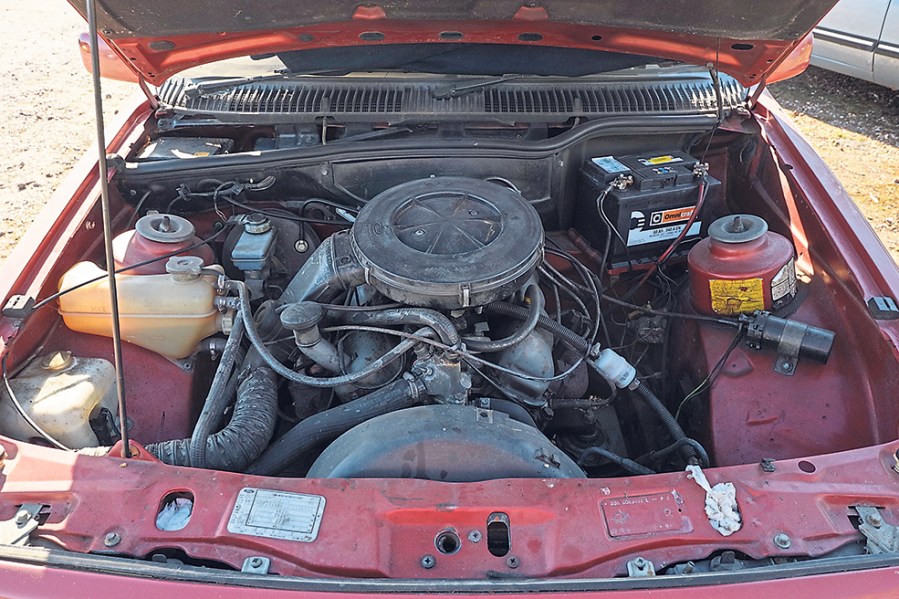
Engine and transmission
The majority of early Ford Sierras left the factory with Pinto engines (even the mighty Cosworth relied on a development of the old Cortina lump). Durable but coarse, the Pinto would soldier on indefinitely, growing progressively noisier with age. Poor servicing is its undoing: oil spray bar blockages often result in camshaft wear, and any clattering from the top end usually signals the need for a fresh cam and followers.
Knocking from the bottom end generally indicates worn crank and shells, which means an engine rebuild. Likewise, heavy blue smoke from the exhaust points to piston, ring or bore wear, often with excess breathing through the oil filler. Don’t fret over a puff on start-up – that’s almost always valve stem seals. Watch for head gasket leaks, coolant loss and ensure the oil is kept fresh with biennial cambelt changes.
Later CVH-powered Sierras weren’t much of an advance over the Pinto. They too suffer from worn cams, lifters and bores. While a rattling CVH is far less alarming than a heavy knock, oil breathing issues are par for the course.
The DOHC motor was a clean-sheet design, but it inherited similar spray bar issues, this time with pricier consequences. Tappet noise at the top end often stems from tired hydraulic lifters, which can chew through cams and even crack or warp the head. Cooling troubles are also common, typically leading to head gasket failure. Unlike the Pinto, the DOHC uses a timing chain, which can stretch or snap – be wary of any rattle. Oil leaks are frequent, too.
Cologne V6 cars were limited to early carb-fed 2.3s or the injected 2.8s and 2.9s. Tapping from the top is normal and usually solved with tappet adjustment. Be aware that later 2.9s used hydraulic lifters, which may have been overtightened, sapping performance. The 2.9 also gained chain drive, avoiding the plastic timing gear of earlier engines, which should ideally be swapped for a metal wheel if not already done. Look out for leaks around the manifold gaskets and beware poor running – the Bosch K-Jetronic on the 2.8 is notoriously finicky and costly to sort.
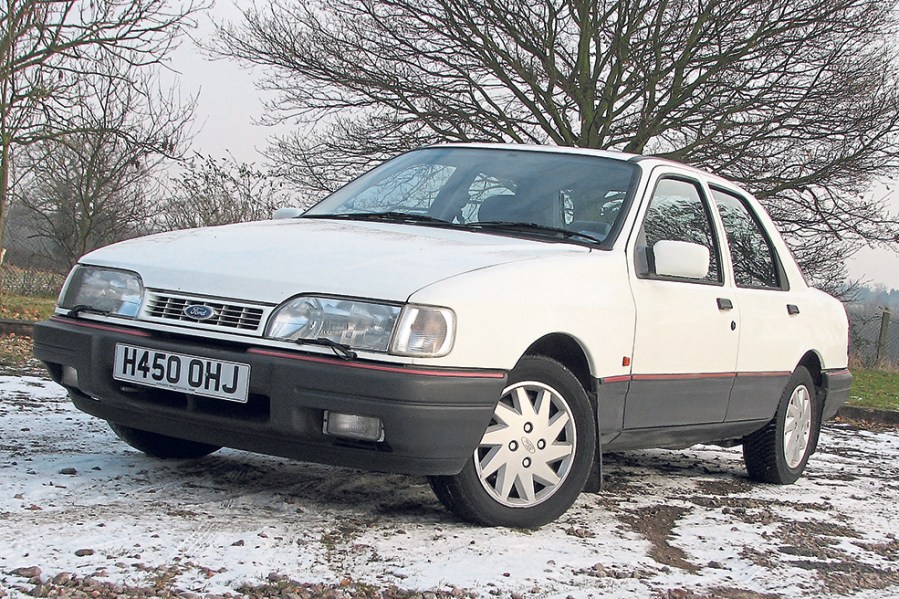
Most early four-speed Sierras have now been scrapped or upgraded to the more common Type 9 five-speed. Both units are long-lived, but gearbox whine is normal. Crunching, especially into third, points to failing synchromesh, while rumbling suggests worn layshaft bearings – either way, a rebuild will be necessary.
The four-speed is slicker to use, whereas the Type 9 feels heavier and more notchy. Persistent baulking is worth investigating: fifth gear can jump out entirely, while general sloppiness may just be worn linkages. Oil leaks are frequent; also check for play in the propshaft.
The stronger MT75 gearbox came with DOHC cars and the 2.9 4x4s. It too suffers synchromesh wear, but a vague shift is more likely due to tired linkage. Four-wheel-drive models often feel a bit harsher through the transmission, though excessive rumbling is a red flag. Clicking may point to a cracked universal joint on the front transfer shaft (an expensive fix), while the rear shaft’s rubber coupling is also prone to tearing.
On the clutch front, check for slip and noisy release bearings, but a floppy pedal is rarely serious – it’s usually just the plastic adjuster gears worn out.
Automatics are now scarce. The later four-speed unit is preferable to the old three-speed, but either needs clean oil and smooth shifting both up and down the range. Sluggish selection may suggest a failed vacuum modulator, tired servo seals or worse internal damage – all of which mean big bills.
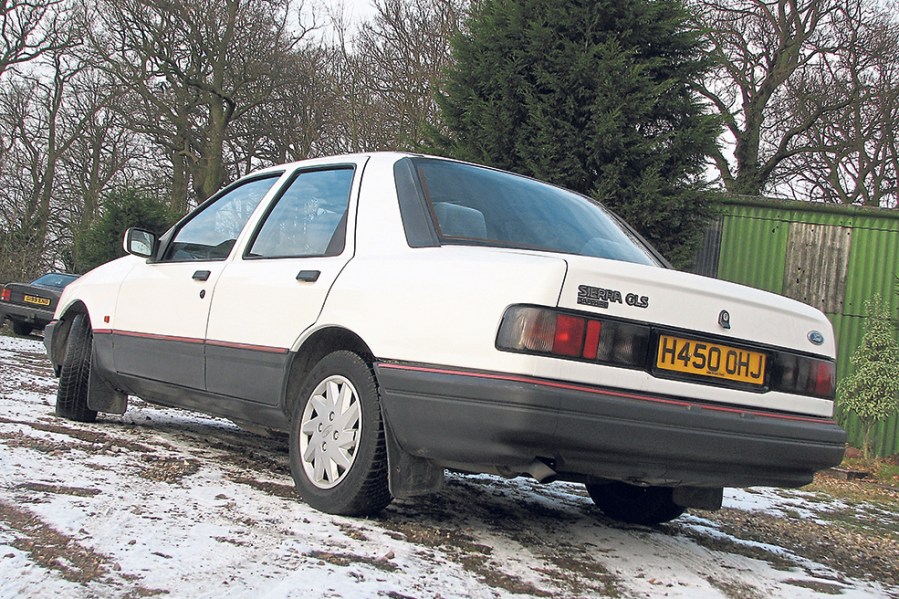
Suspension, steering and brakes
The Sierra uses a simple but effective set-up, with MacPherson struts at the front and an independent rear suspension employing coil springs and semi-trailing arms. On non-sporting versions the ride was on the soft side, though it should never feel unsafe. Vague steering response at the front is often down to worn outer track control arm bushes, usually accompanied by a tell-tale clonk over bumps. A tendency for the rear to feel floaty is more often caused by perished trailing arm bushes, though tired dampers are another likely culprit. Always check that the springs haven’t snapped.
If the car wanders at speed, it may be down to something as simple as a worn steering column bush, or possibly a leaking or tired rack. Look for play at the front wheels. Remember too that most Sierras left the factory without power steering, but retrofitting it is generally considered a worthwhile upgrade.
Braking on the everyday models was nothing special, although larger-engined versions were fitted with ventilated front discs. Pedal judder is common, usually the result of worn discs and pads, or – if only evident on one side – a sticking calliper. The rear drums have a habit of leaking at the wheel cylinders or seizing on the handbrake mechanism, while sporting models with rear discs aren’t immune from similar issues. Expect a spongy feel through the pedal, along with the usual suspects of corroded brake pipes, splitting hoses and tired master cylinders.
Happily, most replacement parts are inexpensive and readily available from motor factors. The exception is ABS-equipped cars, with parts increasingly rare and pricey – always ensure the warning light extinguishes on start-up and try an emergency stop to make sure it’s working.
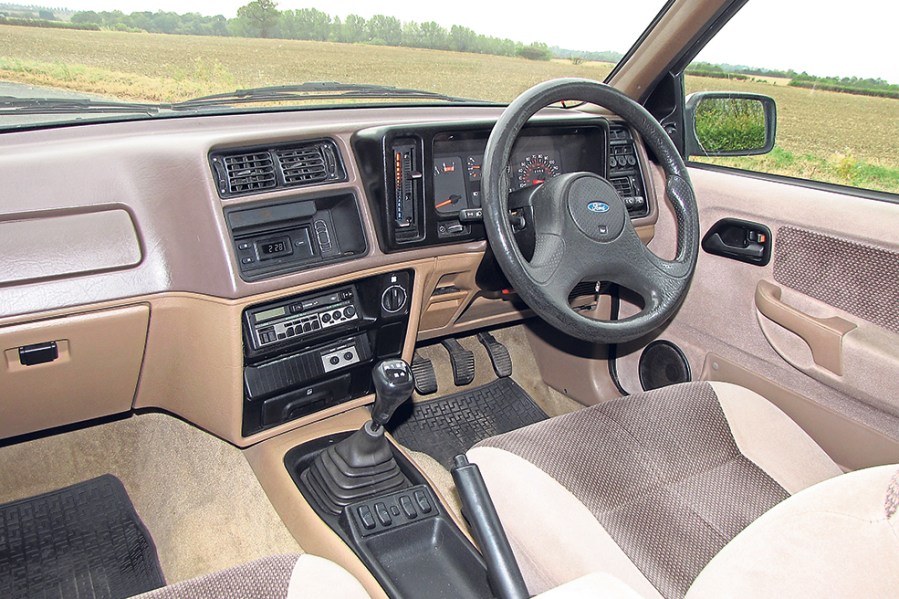
Interior and trim
The Ford Sierra was built to be robust, and most types of trim tend not to show signs of wear until high mileage has been covered. The driver’s seat, however, often suffers from unstitched or torn bolsters, a sagging base, and a loose recliner mechanism.
The vinyl on the door cards can wrinkle or lift from its backing, which is tricky to repair or replace. The headlining is also prone to sagging, though refurbishment isn’t prohibitively expensive.
On a Mk1 Sierra, the dashboard is almost always cracked or warped, particularly around the central speaker grille. Pristine dashboards are extremely rare, and repairs rarely last; to make matters worse, Mk1 dashboards are highly sought after by Cosworth owners, often fetching four-figure sums. Don’t be surprised to see an early Sierra fitted with a later model dashboard – usually without the speaker grille.
Switches, stalks and other electrical components should be inspected – especially the electric window and central locking motors – but these parts are common across the range and not overly costly.
Ford Sierra: our verdict
Sierras may not be the ultimate in style, but their rarity and nostalgia factor grow more appealing with each passing year. Thanks to rear-wheel drive and that Blue Oval badge, any Sierra carries a notable cool factor among retro-motoring enthusiasts.
As ever, it’s the quicker Fords that attract the most attention, and that’s where we’d place our bets: an XR4x4 or GLS is highly investable. And if you come across a 2.0i S, don’t let it slip by – they’re few and far between, even if they aren’t the most accomplished performers.
Even so, a basic 1.6-litre Sierra still delivers that unique sensation of driving a classic, while offering practicality and economy in abundance. It genuinely is a usable classic.
Model Timeline
1978
Planning begins for Cortina replacement with modern aerodynamic design.
1982
Ford Sierra launched in Europe, boasting CVH and Pinto engines from 1.3-2.0 and divisive “jellymould” styling.
1983
XR4i introduced with 2.8L Cologne V6 and distinctive bi-plane rear spoiler.
1985
Sierra Cosworth launched with turbocharged 2.0-litre Pinto-based engine, instant cult status.
1986
Facelift brings styling tweaks and improve interior, diesel engines added.
1987
Sierra 4×4 launched, XR4x4 combining performance with AWD. Sapphire booted saloon broadens appeal further.
1989
Facelift with smoother styling and interior upgrades in the face of rising competition from Vauxhall Cavalier, Rover and Japanese imports.
1990
Sapphire Cosworth 4×4 introduced, offering all-weather performance.
1993
Several special editions towards end of Sierra production before Mondeo takes over.

